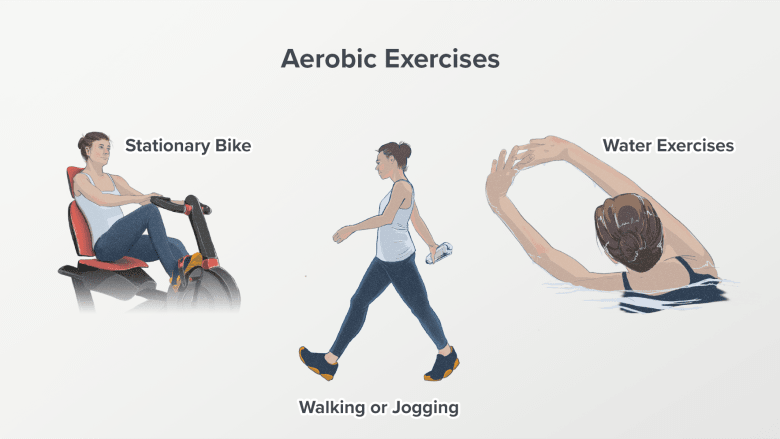An accurate diagnosis of the underlying cause of pain and other symptoms is crucial, since the diagnosis dictates effective treatment options.
For example, treating a lumbar herniated disc will not do much good if a muscle strain or other soft tissue injury is the actual cause of pain. This point is especially important if surgery is being considered for treatment.
In This Article:
- What's a Herniated Disc, Pinched Nerve, Bulging Disc...?
- Diagnosing Disc Problems
- Herniated Disc vs. Degenerative Disc Disease Treatments
- Herniated Disc Video
Nonsurgical Treatments for Herniated Disc Pain
Nonsurgical treatment is always the first course of action for back pain, including pain from a herniated disc or degenerative disc.
Options for nonsurgical treatments typically include a combination of:
Oral medications
OTC medication may help relieve disc-related pain.
Both prescription and over-the-counter (OTC) medications may be used to relieve disc-related pain. A few examples of medications include:
These drugs are usually taken in order to obtain pain relief and allow the patient to participate in physical therapy.
- Nonsteroidal anti-inflammatory drugs (NSAIDs), such as ibuprofen or naproxen
- Oral steroids, such as prednisone
- Anticonvulsant medications, such as gabapentin
- Tricyclic antidepressants, such as amitriptyline
Physical therapy
Aerobic exercise boosts blood flow and promotes the healing of spinal tissues.
Physical therapy for disc pain typically includes a combination of stretching, strengthening, and aerobic exercise to provide better stability and support for the spine.
See Physical Therapy for Low Back Pain Relief
Chiropractic therapy
Manual manipulation aims to improve mobility and reduce stiffness in the back.
Manual manipulation performed by a trained chiropractor may help improve the alignment of the spine. Chiropractic care may also help create a better healing environment in the spine and should not be painful.
Massage therapy
Massage therapy can help reduce muscle tension and muscle spasms, which may add to back or neck pain. Muscle tension is especially common around an unstable spinal segment where a disc is unable to provide necessary support.
Epidural steroid injections
An injection containing steroids can reduce inflammation and relieve pain.
Epidural steroid injections consist of steroid pain medication injected into the area surrounding the spine. This treatment tends to be more effective for nerve root pain than for neck or back pain.
Watch Epidural Steroid Injections for Back Pain and Leg Pain Video
Regenerative medicine
Regenerative medicine treatments that may be used to treat spinal disc problems include stem cell injections, platelet-richplasma (PRP), and prolotherapy. Regenerative treatments help amplify the body’s natural healing abilities, reduce inflammation, and encourage the growth of new cells and tissues.
In most cases, nonsurgical treatment is able to sufficiently relieve pain from a herniated disc and surgery is not needed.
Surgical Treatments for Disc Pain
Surgery is only considered when nonsurgical treatments have not provided adequate pain relief.
Spine surgery can only alleviate pain if the herniated disc or degenerative disc seen on an MRI is confirmed as the pain source. The following spinal surgeries may be considered to alleviate disc pain:
- Microdiscectomy for a herniated disc is a minimally invasive procedure in which the herniated portion of the disc is removed. Microdiscectomy surgery involves making small incisions over the skin to access the spine, but the surgery may also be done endoscopically. In endoscopic microdiscectomy, instruments are inserted through a thin tube or tubes to minimize disruption to the surrounding tissue. A tiny camera can be inserted through a tube to provide visualization for the surgeon.
- Artificial disc replacement for degenerative disc disease and herniated discs is a minimally invasive procedure that replaces a damaged disc with a specialized implant that mimics the normal function of the disc, maintaining mobility.
See Total Disc Replacement – Lumbar Artificial Disc Replacement
- Spinal fusion for degenerative disc disease is a surgery in which the disc space is fused together to remove motion at the spinal segment. Spinal fusion involves setting up a bone graft, as well as possible implanted instruments, to facilitate bone growth across the facet joints. Fusion occurs after the surgery.
- Spinal surgery is typically paired with a physical therapy rehabilitation program to restore range of motion and maximize functioning after surgery. Recovery from surgery depends on the severity of the condition, and the individual’s natural healing process.
Surgery is never appropriate when the exact pain source cannot be identified.










